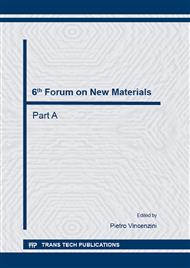p.56
p.61
p.65
p.70
p.76
p.82
p.90
p.96
p.102
Ceria Based Materials with Enhanced OSC Properties for H2 Production by Water Splitting Reaction
Abstract:
A novel surfactant-assisted synthesis method was developed in our laboratory to enhance the oxygen storage capacity (OSC) and the thermo stability of a TWC catalyst based on zirconia and rare earth oxides. The same procedure was used to prepare ceria-zirconia compositions with different amount of ceria, either undoped or doped with La and Nd. The potential use of these materials in a two steps solar thermochemical water splitting cycle for the production of H2 was investigated. For this proposal the O2 release of the materials was measured through thermogravimetric analysis in N2 at 1573K. Then all prepared compositions were subjected to an aging treatment at temperature above 1573K in air or in N2 flow and their activity in producing H2 via water splitting at 1073K was evaluated with respect their structural evolution. The results obtained highlight that the reactivity depends on the temperature and atmosphere of the treatments and on the composition. The best result was obtained for the ceria rich composition treated at 1573K in N2 and for the corresponding doped composition treated in air.
Info:
Periodical:
Pages:
76-81
Citation:
Online since:
October 2014
Authors:
Keywords:
Price:
Сopyright:
© 2014 Trans Tech Publications Ltd. All Rights Reserved
Share:
Citation:


